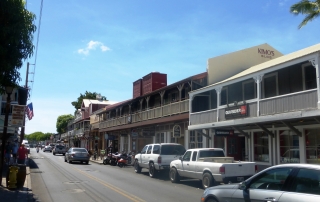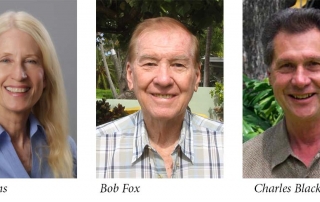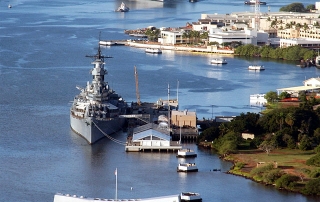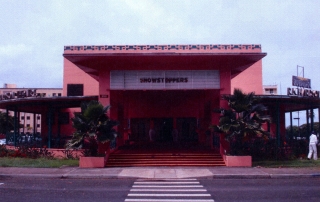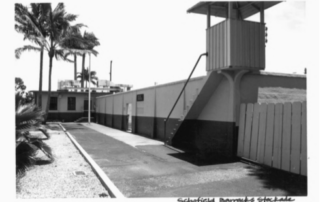Get the Scoop On: HCPO Conference 2014
Preservation Resource Center Blog Series No. 1 Last week Historic Hawai‘i Foundation attended the Hawai‘i Congress of Planning Officials Conference, a yearly meeting of public and private planners and associated professionals. Held at the Sheraton Maui Kā‘anapali, this year’s conference focused on the theme of SHIFT – Shaping Hawai‘i for Tomorrow. Who better to analyze this topic than Hawai‘i’s planners? As preservationists, we know that Shaping Hawaii for Tomorrow starts with looking at the past; so we chose to participate in the walking tour of Lahaina Historic District on the first day of the conference. Annalise Kehler and Erin Wade of Maui County Planning Department organized the tour which was led by Theo Morrison, Executive Director of Lahaina Restoration Foundation. This was an all-day insider’s tour of the preservation work happening in Lahaina. Starting with the Wo Hing Museum, along Front Street to the Kings Taro Patch, through the Baldwin Home, and up to Hale Paahao, the old prison, we learned about the Hawaiian, Missionary, and Whaling history of this significant town. We then made our way down to the harbor, seeing the Old Lahaina Courthouse and park along the harbor, the former site of Kamehameha’s Brick House. While enjoying lunch, Lahaina Restoration Foundation filled us in on plans to rejuvenate the harbor access area while providing interpretation for visitors and locals on the history of the area. The walking tour provided a foundation to begin the conference which consisted of plenary and breakout sessions. Experts from across the islands and the mainland shared their insights and experiences of planning for Hawai‘i’s future. A main theme of the entire conference consisted of ways that people were planning in response to larger factors such as climate [...]


